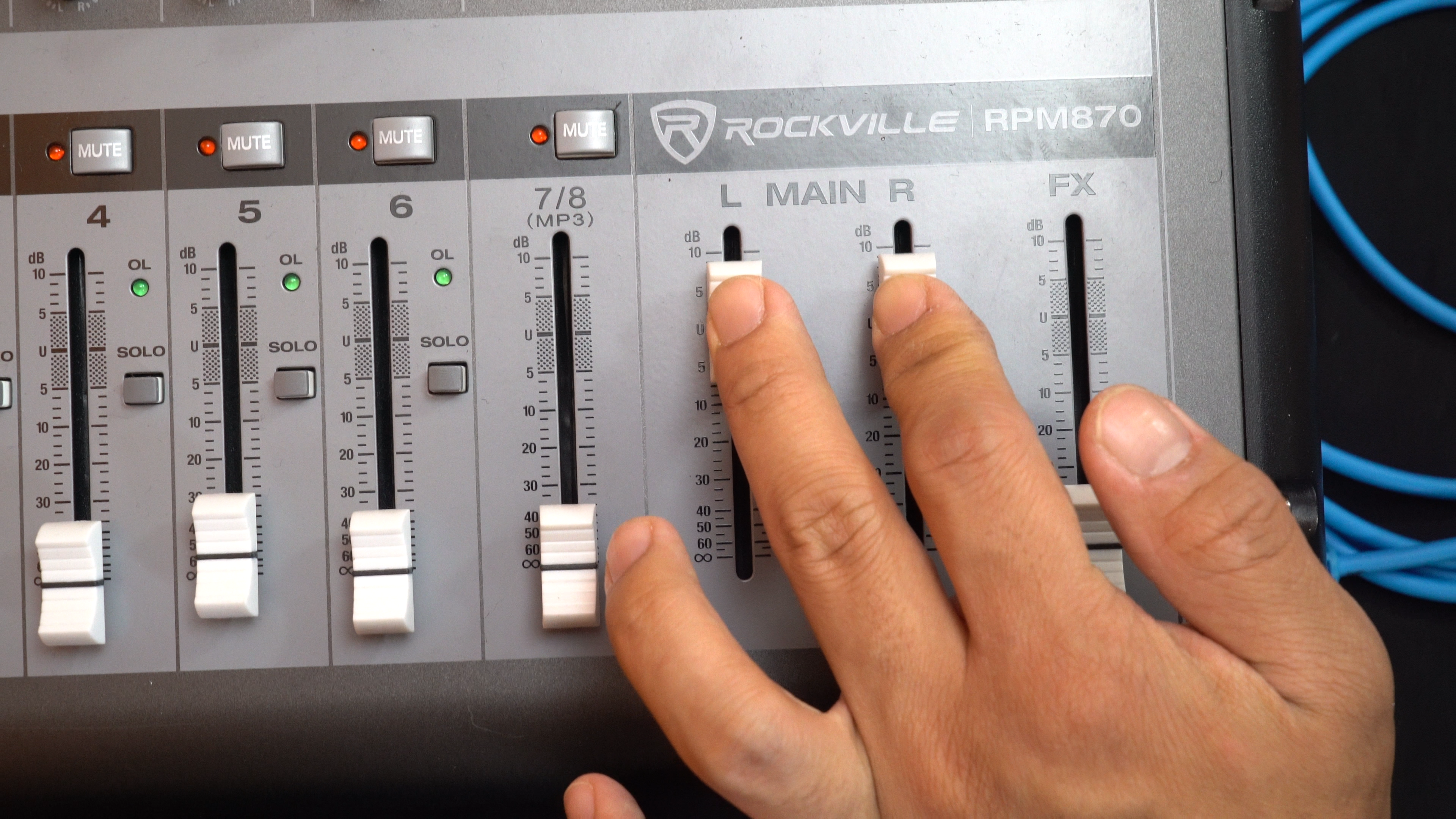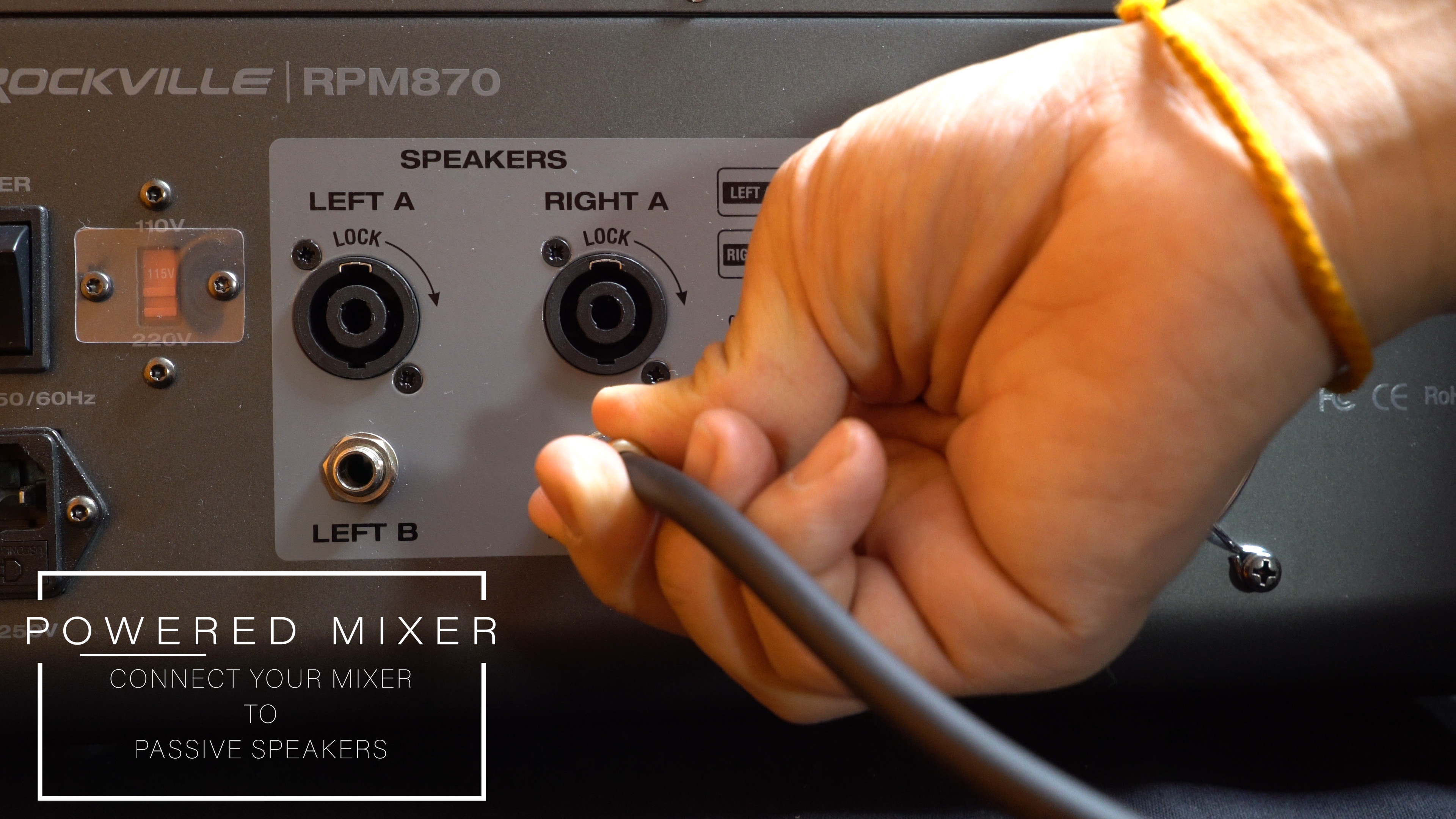What is a Mixer? How do I use one? - Rockville University Ep. 2
Posted by Darro Chea on 28th Aug 2018
Today we are going to be discussing mixers and what they do. They show up in just about every live sound scenario, and are absolutely necessary to power sound for events.
What exactly is a Mixer?
A mixer essentially takes a whole bunch of audio signals, and combines / “mixes” them down to a final stereo signal Each audio signal goes through a series of gain stages (volume adjustments), effects (Equalizer, compression, delay and reverb) and then a pan pot to move that audio channel within the final stereo field from left to right. That final stereo signal then gets sent to a pair of speakers that plays the combination of all those different audio channels.
Think of it like a highway. The destination of the highway are the left and right speakers. The lanes on the highway are the “channels” of audio within the mixer. Each audio signal is on its very own lane, or channel. The mixer then merges or “mixes” the lanes of audio into two final channels or “lanes”, both left and right to get sent to the speakers.

Gain stage...what?!
Gain staging is basically the term meant to describe raising and lowering levels of volume of a signal. When you first plug something into the mixer it goes through a “gain” knob, which is essentially just a volume adjustment. A signal goes through several levels of gain-staging before it reaches its final destination (the speakers).

At the top of the channel on the mixer where you plug in your microphone or device, there’s a gain knob. If you are using a microphone, it will first go through a “preamp.” This preamp takes your microphone signal (which is very low in voltage) and raises it up to line level. You can raise or lower the level initially right there, just be careful because you don’t want to the level to be too high or it will distort and that never sounds good…(well usually).

After the first gain knob, it can go through effects like EQ or compression if your mixer has it. It can also get sent out to outboard effects through the AUX if you feel like making it a little more complicated.
NOTE: If you plug in a condenser microphone, you’ll have to use phantom power, usually a button labeled 48v.
Panning

The signal then travels through a Panning knob or “pan pot”. This panning knob allows you to adjust the positioning of the signal between the stereo field from left to right. Turning the knob all the way to the left will place that specific channel all the way on the left speaker and vice versa on the right channel.
FADERS! YES!
Finally, you get to use the famous fader knob. Using this knob officially makes you an audio engineer. This fader that’s at the bottom of the mixer is basically the last gain control on that individual channel before it gets sent to the master faders. It controls how much signal is sent to the Master Left and Master Right channels. Once you set the channel faders, then you’ll have to set the Master faders.

The master faders are usually the last ones on the mixer, positioned on the right side of the board. These faders control the overall signal that gets sent to the Left and Right speakers. There’s no pan control on these because this is the last two lanes on the highway, and everything has essentially been “mixed” already.
Speakers, finally!

So now you can finally connect to the speakers right?! Not so fast!! Speakers require a lot more power to be able to play your music loud enough to be heard. First we have to figure out if your speakers need power or not. Speakers are either passive or active. Passive speakers need to be powered by some sort of “Power Amp” to be heard. While active speakers have their own built in power source.
...what if I have passive speakers but don’t want to get a power amp?
Some mixers actually have power amps built-in to be able to power speakers. We actually call these “ powered mixers”. If your mixer does not have a power amp built into it, it’s called a “passive” mixer. Now, this is where things get a little tricky. If you have a Powered Mixer, you plug into Passive Speakers, if you have a Passive Mixer, you plug into Powered speakers, or you plug into a Power Amp and then Passive speakers. Here’s a diagram that should help out

NOTE: It's important to understand which output you are connecting your speakers to your mixer from. Don't send an output from a "powered mixer" to an also "active speaker". It would take the already amplified, high voltage signal and would get further amplified by the speaker's built-in amplifier. It could turn out really bad...(distortion, blown speakers, fire, police getting called.) Just check the user specifications on your equipment to ensure that you are properly connecting your speakers.
There you go! You are now ready to start your live sound gig. Of course there are many more nuances of live sound before you can start mixing at the next Grammy Show, but everyone has to start somewhere.

